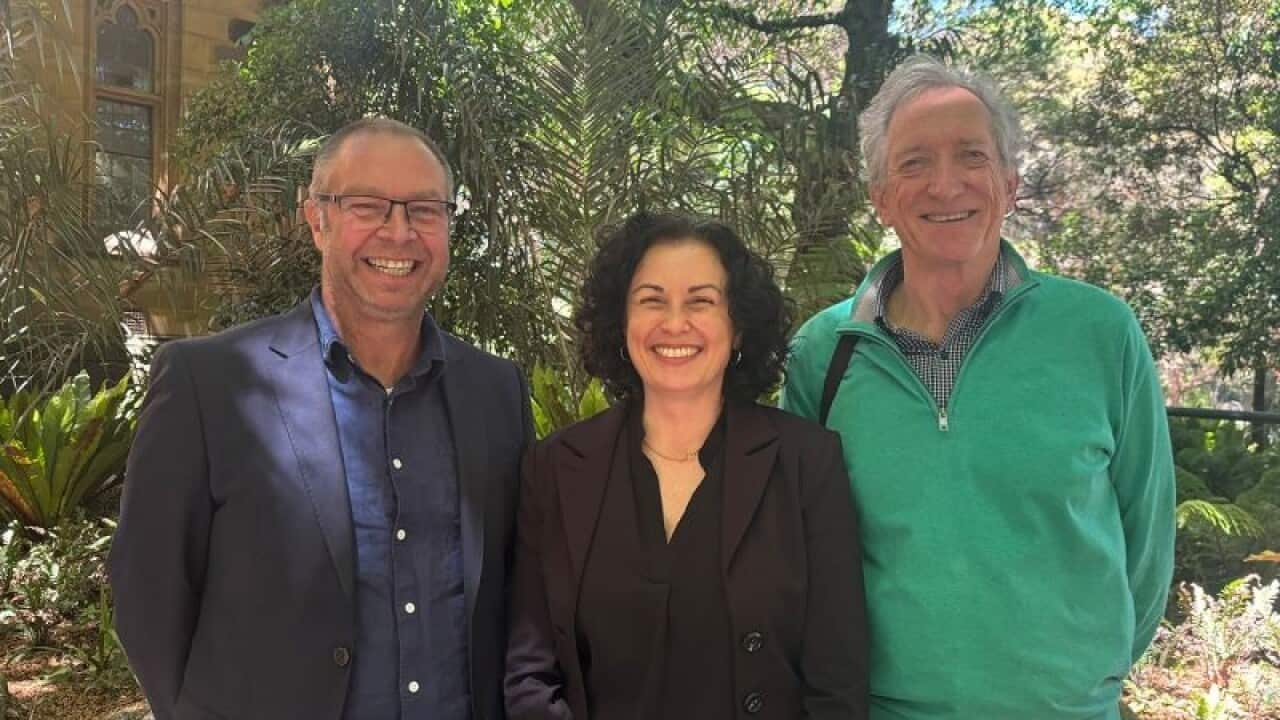TRANSCRIPT
The Jagun Alliance Aboriginal Corporation has been teaching residents of Billen Cliffs Village in northern New South Wales how to use fire techniques that have been passed down through the centuries to manage land, plants and animals.
Cultural burning is a planned and deliberate fire set on landscapes that is executed within controlled lines and at lower temperatures, burning small patches of vegetation, allowing animals and birds to move away from the heat.
Indigenous elders have used the technique to reduce fire hazards and facilitate growth of cultural pathways, significant species and native wildlife.
Oliver Costello, the executive director at Jagun says the technique generates far less heat than standard hazard reduction burning.
"You know, the land is teaching us that we are not paying attention - logging and clearing and fossil fuels and the destruction that we've done on the land and that we've put up into the atmosphere, it’s coming back on us. And that's why it's so important that we get people back on the country and learning how we can heal the land, bring the fire back, bring the trees back, look after the waters in the river and get more functional healthy systems. Because not only will they be better for us, cleaner water and air and safer places, but also be more resilient to changes in the climate which we're going to have more you know, we're seeing big changes."
He says following the disastrous bushfires in the northern hemisphere summer across North America, Europe and China, the expectation is that Australia's summer will also bring with it increased risks of serious bushfires.
"So important that we learn from what's happening, you know, Europe, Canada, you know, it'll be us in next few months will be when the fire, you know, cycle shifts, you know, and these landscapes and we go from these cooler fires to hotter, you know, summertime. We'll start to see that hot fire too."
Local resident Anastasia Guise reached out to Jagun to help to prepare the land around the village for future possible bushfires by eradicating weeds from the undergrowth.
She says many people are no longer active on the land and they're not sure what to do or how to bring back biodiversity or protect themselves from fire.
"I think after the 2019-2020 bushfires a whole lot of people right across Australia, including here where we are in northern New South Wales became really conscious of the destructive force of out-of-control wildfire, and they began to understand that some of the things that led to that besides, you know, climate change and landscape legacy and things were, you know, the way in which landscapes have been managed and are being managed. And so one of the keys that was missing I think, for a lot of people was cultural burning."
Cultural fire was lost after colonisation in the 18th century, but it has been revived in recent years, especially following the 2019-20 "black summer" as landowners became increasingly concerned about future proofing their properties.
Property owner Michael Smith, who lost close to 75 per cent of his property in those bushfires, also called in Jagun for help ahead of the summer season.
"It’s part of life. Part of the Australian bush, it burns and you’ve got to be on top of it. Our Indigenous people have burnt for years, didn’t they, and keep control of fires and stopped all the fires. But now a lot of people said we got a lot of landowners we don't want to burn anymore, and that's where we’ve got a problem in these fire seasons."
The Jagun initiative also creates opportunities for local Aboriginal people to work on country by gaining practical skills while maintaining ancient methods of caring for the land.
With a grant from the Australian Government’s National Emergency Management Agency, Jagun is able to run 20 community bushfire recovery workshops across the seven Local Government Areas in the Northern Rivers region of New South Wales.
Anastasia Guise, speaking while taking part in the cultural burn, says she's really pleased at the way the project in Billen Cliffs is working out.
"I feel really comfortable. I didn't expect to feel this comfortable, but I just feel like it's really right, it’s being done gently, there’s a whole lot of crew on the ground and I feel absolutely comfortable with it."













